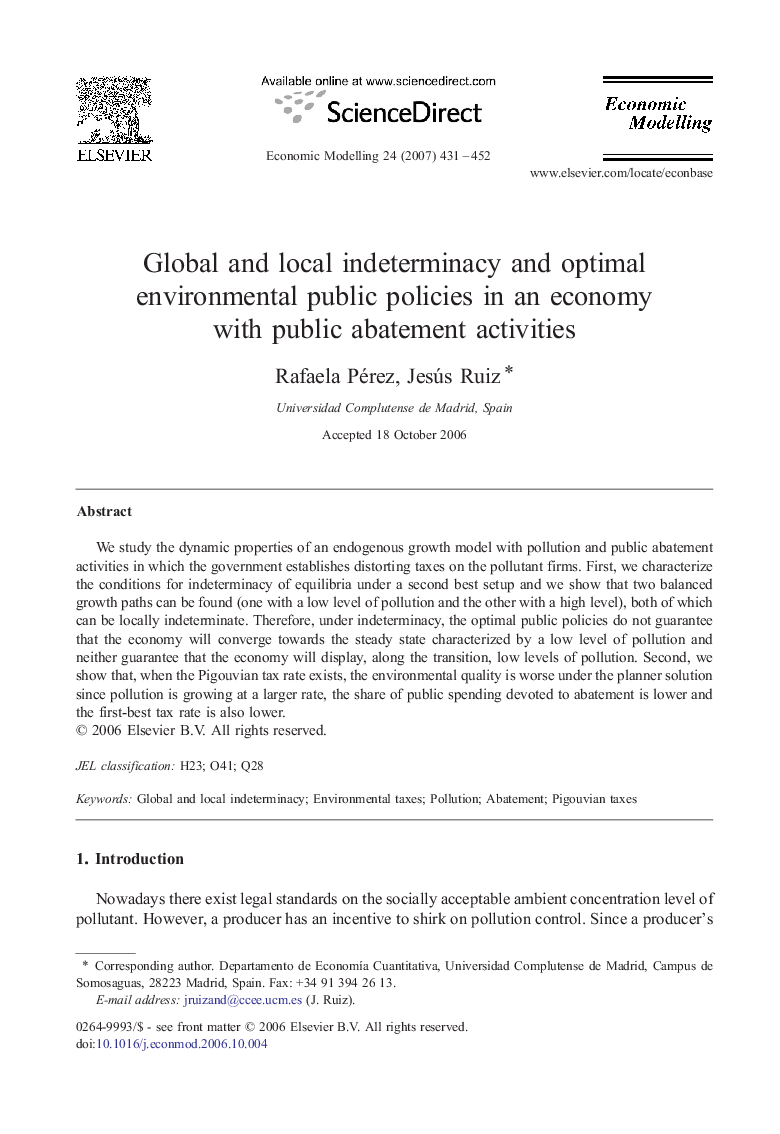| Article ID | Journal | Published Year | Pages | File Type |
|---|---|---|---|---|
| 5056125 | Economic Modelling | 2007 | 22 Pages |
Abstract
We study the dynamic properties of an endogenous growth model with pollution and public abatement activities in which the government establishes distorting taxes on the pollutant firms. First, we characterize the conditions for indeterminacy of equilibria under a second best setup and we show that two balanced growth paths can be found (one with a low level of pollution and the other with a high level), both of which can be locally indeterminate. Therefore, under indeterminacy, the optimal public policies do not guarantee that the economy will converge towards the steady state characterized by a low level of pollution and neither guarantee that the economy will display, along the transition, low levels of pollution. Second, we show that, when the Pigouvian tax rate exists, the environmental quality is worse under the planner solution since pollution is growing at a larger rate, the share of public spending devoted to abatement is lower and the first-best tax rate is also lower.
Related Topics
Social Sciences and Humanities
Economics, Econometrics and Finance
Economics and Econometrics
Authors
Rafaela Pérez, Jesús Ruiz,
